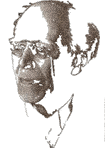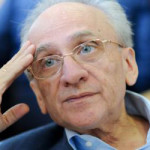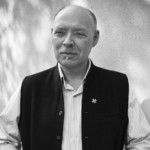2013 has seen a wealth of major publications which in some way mark the 150th anniversary of Stanislavski’s birth.
Members of the Advisory Board for both the Centre and for our ejournal, Stanislavski Studies have been prominent contributors.
Sergei Tcherkasski’s new book, Stanislavski and Yoga, has been published in Russian in St Petersburg (SPBGATI, 2013). The book includes material originally published by Prof Tcherkasski in his two articles for Stanislavski Studies.
“For a long period, the influence of Yoga on Stanislavski was denied by Soviet theater researchers, or it was considered quite fleeting. Prof. Sergei Tcherkasski’s book proves the opposite. Records on Yoga in Stanislavsky’s writings from different periods are carefully collected here. Hidden references which are not explained by Stanislavski himself due to censorship are deciphered (Yoga was half forbidden in Soviet Russia from the 1920s on). The focus of the research is a comparison of the Stanislavski System and Yogi Ramacharaka’s books which were a main source for Stanislavski.
Elements of the System which are based on Yoga principles are analyzed here. Among them are relaxation of muscles, communication, rays of communion, radiating, beaming of aura, sending of prana, attention, vision. Special attention is paid to the idea of superconscious in classical Yoga, and in Ramacharaka’s and Stanislavski’s theories.”
Prof Sharon Carnicke: Checking Out Chekhov: A Companion to Anton Chekhov’s Plays (Companions to Russian Literature), has been published by Academic Studies Press.
Prof Carnicke said of her book, “I have written this book in a lively style, much like the way in which I teach. Moreover, the book does not advance specific readings of the plays; rather it guides my readers to ask informed questions about the plays that will lead them to their own interpretations. The last chapter … explores how Chekhov’s plays come to life through the collaborative efforts of directors, designers and actors. There I explore Stanislavsky’s production plan for “The Seagull” in depth, comparing his hopes for the production against the ways in which he had to change his plan in light of his collaborators’ desires and the material realities of the theatre in which he worked”.
A new edition of An Actor Prepares has been published by Bloomsbury Press in the Bloomsbury Revelations series, with a Preface by Board member Bella Merlin.
Board member Prof Maria Shevtsova has co-authored The Cambridge Introduction to Theatre Directing with Christopher Innes (Cambridge University Press) which Prof Shevtsova states, “also honours Stanislavski, placing him in a wider context: in the context of his role in establishing modern directing , including a discussion of his production score for The Seagull ( Chapter 2); in the context of Russian directors, who had been closely associated with him (Meyerhold, Vaghtangov, or were antagonistic (Tairov), as a vital reference for contemporary directors of ensmble theatre (Chapter 5 – Strehler, Stein, Brook, Dodin, Vassiiiev, Donnellan, Mitchell); fundamental for Grotowski (Chapter 7, but also in Chapter 2).”
Finally, we eagerly anticipate the publication of Prof Laurence Senelick’s Stanislavsky:A Life in Letters, due from Routledge in October.
“Senelick’s brilliant selection, translated by him with rare perspicacity, fully opens Stanislavsky’s extraordinarily multi-layered and dramatic life to view. Never before in any English-language collection of his letters, or, indeed, in any account of his pioneering artistic achievements, have the turbulences of Stanislavsky’s life in art and history been so sharply brought into focus. Senelick’s is a magisterial work, worthy of his colossal subject and his status as a scholar of Russian literature and theatre.” (Maria Shevtsova, Goldsmiths, University of London).



